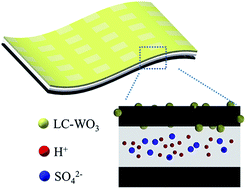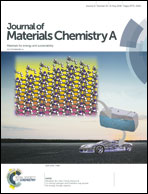Low-crystalline tungsten trioxide anode with superior electrochemical performance for flexible solid-state asymmetry supercapacitor†
Abstract
Previous research on pseudocapacitive anodes has been focused on well-crystallized transition metal oxides and their cycling stability and rate performance is often limited by the difficulty in contracting or expanding, sluggish ion diffusion and penetration restrictions. Here, the effects of crystallinity on the electrochemical properties of WO3 are investigated by comparing the behavior of low-crystallinity tungsten trioxide (LC-WO3) with highly crystalline tungsten trioxide (HC-WO3). The results show that LC-WO3 with plenty of structural defects and disorder provides facilitated redox reactions and a capacitive–dominant energy storage property, thus offering a higher specific capacitance (474 F g−1) and an enhanced capacitance retention performance compared to HC-WO3. Further assembling a flexible solid-state asymmetry SC, based on LC-WO3in situ grown on porous carbon cloth, achieves an energy density of 7.6 mW h cm−3 and an excellent cycling stability with a 92% capacitance retention after 10 000 cycles. These results demonstrate a new approach for developing high-performance pseudocapacitive anode materials for advanced SCs, and hold promise for low-cost flexible electronics.



 Please wait while we load your content...
Please wait while we load your content...